

Teej Festival celebrates women, tradition and community in South Salt Lake
By Peri Kinder | peri.k@thecityjournals.com
Music, dance, food and vibrant colors mark the annual event.
To honor the goddess Parvati and Lord Shiva, Teej is celebrated by millions of Hindu women and girls around the world. In South Salt Lake, the Nepali and Indian communities gathered to observe the festival, marked by fasting, feasting, dancing, music and sisterhood.
Hosted by Community Building Services and held at the SSL Community Center (2530 S. 400 East), the fifth annual Grand Teej Celebration on Aug. 23 featured performances by Ashish Aviral, Amrita L. Magar, Susmita Biswa and local singers and dancers.
Teej is a celebration of love and devotion, observed by married women and unmarried girls, to honor sisterhood and to pray for the long life of their spouses or future husbands.
“This is a special event dedicated to women,” said Rajani Thapa, Teej assistant program coordinator. “It is dedicated to women, but at the same time, we are honoring our husbands. So this is really special for both women and the men.”
Dressed in bright saris and adorned with intricate jewelry, women at the event performed dances, sang folk songs and asked for a happy married life, with blessings upon their families. Traditional foods and drinks were served to attendees and honored guests. The festival was expected to attract



Dancers of all ages performed at the SSL Teej festival on Aug. 23, celebrating love, devotion and family. (Peri Kinder/City Journals)
Treating your whole family tree.

Holy Cross Hospitals have been trusted by Utah families since 1875.
For 150 years, Holy Cross Hospitals have cared for Utah families in their most tender, powerful, and vulnerable moments. From newborn checkups to post-op recoveries, we’ve seen generations through their highest highs and hardest days.
We’ve done it all with one purpose: to treat people, not just patients. We care for every person with personalized treatment powered by compassion and respect.
Our belief that we all hold the power to heal helps us provide care that spans generations and stands the test of time.
Learn more at mountain.commonspirit.org/holycross150.

Sir Walter Candy Co. Keeps the Legacy of Candy Making Alive
It’s been nearly 30 years since Alfonso and Alejandra Porras founded the Sir Walter Candy Co., where they keep the legacy of candy making alive. Named after a New Jersey confectioner, Walter Zittle, and based on his personal collection of recipes, the company was a dream come true for Alfonso.
Today, the the new store in South Salt Lake is a 36,000-square-foot factory and storefront, where making candy is a family a air. Amir Porras is the vice president and son of the founding couple. He’s been working at Sir Walter’s since he was 7 years old.

What products do you offer?
We sell gourmet chocolates and confections. We have a diverse range of options including popcorn, brittles, candied and roasted nuts, dried fruits, candy and more. Right now, my favorite is our Coconut Cashew Brittle.
What sets your company apart from your competitors?
We make sure everyone feels welcomed and taken care of. It does not matter if you are coming in for a treat or need to place a large order, we take care of everyone the same. It also helps that our chocolate and candy are really good. When someone needs a sweet fix, we are here to give them the right recommendations.
What are some unique products you have at the store?
One of our signature products is our English Toffee, a customer favorite for sure. We also have a decadent frozen hot chocolate in a Belgian chocolate–covered Cup, and chocolate strawberries you can customize. For kids of all ages who can’t decide what they want, they can choose a little bit of everything.
Tell us about your factory.
You can see our process when you visit the store in South Salt Lake We make chocolate-covered pretzels, popcorn in a variety of flavors and hand-dipped chocolates. Our homemade marshmallows are dipped in Belgian chocolate and rolled in delicious almonds We have items here you can’t find anywhere else.
Who is your ideal customer?
Anyone who loves chocolate, sweets and a fun atmosphere. Our store is a destination for everyone with a sweet tooth. It will quickly become a family favorite.

What do you offer businesses?
Custom products and packaging are great ways to build your brand. We use only the best ingredients in our confections and that will reflect well with your customers. Businesses can use our products or create something unique to their brand. They can choose from chocolates, brittles, popcorns, cookies, dried fruit, nuts and candies.
What are your customers saying?
We have rave reviews from regular customers who love the quality of our chocolate and our new location. With 28 years of experience and more than 400 products, we’re really the company to beat.
Are you hosting any upcoming events?
We just opened our beautiful retail store in South Salt Lake on Aug. 14. Everyone is welcome to come tour our factory, see how our candy is made and even customize their own treat!
Sir Walter Candy
3828 S. Main Street, South Salt Lake 801-463-1541
sirwaltercandy.com Social Media @SirWalterCandy
SSL Key Leaders Council holds inaugural meeting
By Peri Kinder peri.k@thecityjournals.com
Representing a diverse group of organiza-
tions, more than 30 community leaders gathered for the first South Salt Lake Cares Key Leader Council meeting in August.
The council will meet quarterly to refine its mission, outline a strategic approach to support the community and collaborate with the newly formed SSL Cares Community Council to lay the groundwork for addressing and targeting risk factors that hinder success for city residents.
“The key leaders are meant to provide more of a strategic bird’s-eye view. They will be used as a resource by the community council,” said SSL Cares Coalition Coordinator Chelsea Frost. “The community council is going to be in the trenches, boots on the ground. They’re the worker bees that are making stuff happen.”
The Key Leader Council is made up of representatives from organizations like Promise SSL, Granite School District, Westminster University, Salt Lake Community College, Odyssey House, SSL Police Department, International Rescue Committee, MOSIAC Inter-Faith Ministries, The Church of Jesus Christ of Latter-day Saints, Intermountain Children’s Health and The City Journals.
Now that the SSL Cares Key Leader Council and Community Council have been formed, the next step is to identify risks in the community that workgroups can address. Key focus areas are substance misuse prevention, gang activity, physical health, early learning, social impact and after-school programs.
With a focus on evidence-based practices, the SSL Communities That Care pro-

gram will research how those risks affect things like school absenteeism, low literacy rates, gang involvement and domestic violence. The goal is to build stronger communities by creating pathways to graduation, employment and beyond.
“I love the amount of work that happens in these coalitions because we all get in the same room, we’re all working on the same thing, but we’re coming from different sectors, so there is a lot of cross-pollination that can happen if we take advantage of this group,” Frost said. “The cool thing about South Salt Lake is that normally CTC
coalitions are not this robust; they just don’t have this many people.”
Rev. Dr. Leslie Whited leads the Mosaic Inter-Faith Ministries of SSL. She volunteered to serve as an SSL Key Leader to help promote community in the area.
“Our values align with the city of South Salt Lake, and I felt like this was a way to collectively support the work of the city,” she said. “We are known as one of the most diverse organizations in the city and in Utah.”
Although there are several CTC groups in the state, each community is different and
each council identifies specific needs for the residents in the area. Once quantitative data is collected about SSL by the Community Council and committees, leaders can develop a community profile and provide feedback to prioritize the target areas identified.
“We’ll be looking at the elevated risk factors that are concerning to us and what the protective factors are that we might want to build up,” Frost said. “We want to know what it means for us specifically. That’s what we’re going to be focusing on this year.” l
SOUTH SALT LAKE
TEAM
The South Salt Lake Journal is a monthly publication distributed directly to residents via the USPS as well as locations throughout South Salt Lake.
For information about distribution please email hello@thecityjournals.com or call our offices. Rack locations are also available on our website. The views and opinions expressed in display advertisements do not necessarily reflect or represent the views and opinions held by Loyal Perch Media or the City Journals. This publication may not be reproduced in whole or in part without the express written consent of the owner. © 2019 Loyal Perch Media, Inc.
SOUTHJORDAN JOURNAL.COM
PUBLISHER
Bryan Scott | bryan.s@thecityjournals.com
EDITOR
Travis Barton | travis.b@thecityjournals.com
ADVERTISING EXECUTIVES
Mieka Sawatzki | mieka.s@thecityjournals.com
Lindsay Andreasen | lindsay.a@thecityjournals.com
Jason Corbridge | jason.c@thecityjournals.com
Ryan Casper | ryan.c@thecityjournals.com
CIRCULATION COORDINATOR Lydia Rice | lydia.r@thecityjournals.com 385-557-1022
Rack locations are also available on our website.
EDITORIAL & AD DESIGN
Stacey LaMont
Ty Gorton
SOUTH SALT LAKE CITY JOURNAL 9500 South 500 West, Suite 205 Sandy, UT 84070
PHONE: 801-254-5974
Our mission is to inform and entertain our community while promoting a strong local economy via relevant content presented across a synergetic network of print and digital media.
Designed, Published, & Distributed by

A diverse group, representing more than 30 organizations, met for the first South Salt Lake Cares Key Leader Council meeting to lay out a path for the future. (Peri Kinder/City Journals)



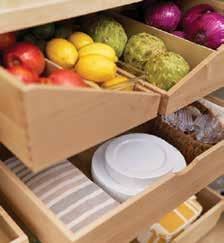




City council adopts Downtown Connect Plan to help secure future transit funding
The South Salt Lake City Council has unanimously adopted the Downtown Connect Plan, a resolution required by state law to guide development around the city’s public transit stations and to make the city eligible for regional transportation funding.
By Linda Petersen l.petersen@mycityjournals.com
The South Salt Lake City Council has unanimously adopted the Downtown Connect Plan, a resolution required by state law to guide development around the city’s public transit stations. This action, which followed a positive recommendation from the planning commission on Aug. 7, fulfills a state law (HB462) requirement for all cities with public transit.

there’s no way to connect Central Pointe Place. Everyone who gets there has to get there from 2100 South...and this is proposing that it connects, which would save a lot of time for people, and it would really connect our downtown.”
As an essential building block that positions cities to thrive, Downtown South Salt Lake aspires to become “a model community of lively neighborhoods that celebrate creativity and entrepreneurial energy,” the plan’s vision statement says. “Districts will promote dynamic, human-centric, and safe places with vibrant streetscapes, lined with a blend of housing options and economic drivers including businesses and dining establishments. Alternative transportation systems including transit and ped/bike corridors will form an interconnected network linking neighborhoods together while keeping the community connected to the greater Salt Lake region.”

“HB462 requires all cities that have a fixed guideway public transit station to plan a half-mile radius around that station,” Community Development Deputy Director Eliza Ungricht told the city council. “This plan encompasses two of our stations, the Central Pointe station and then the South Salt Lake Streetcar station. So, it’s a two-for-one and that’s why it’s called the Downtown Connect Plan because it’s our downtown area.”
improvements, such as an at-grade crossing at Central Pointe Place to better connect the downtown area.
Adopting the plan is a critical step to get it certified by the Wasatch Front Regional Council which is necessary to secure regional funding from organizations like UTA, Ungricht said.
The plan’s primary goal is to guide development within a half-mile radius of the Central Pointe TRAX and South Salt Lake Streetcar station. It proposes crucial
“One of the biggest wins I would say for this station area plan is that it talks about an at-grade crossing at Central Pointe Place,” Ungricht said. “Right now
“Without this plan being approved tonight through this resolution, we can’t get it on broader regional plans to get funding for something like this to get done because WFRC and UTA won’t see it as an approved official plan,” she said.
The plan also outlines the need to update other city plans, such as the general and mobility plans, which staff are already working on.
“The good news is a lot of these plans that they talk about updating or creating, staff is currently working on or already talking about,” Ungricht said. “So, we’re one step ahead, and so, that’s super exciting.” The council voted unanimously to approve the plan. l




Photo: Don Polo Photography
The new South Salt Lake City Downtown Connect Plan will help improve the walkability of the city’s downtown say city officials. (Courtesy South Salt Lake City)







hundreds of local attendees to celebrate culture and community.
During the event, a special recognition was given to SSL Mayor Cherie Wood, University of Utah’s Jennifer Mayer-Glenn (director of University Neighborhood Partners) and Tek Neopany, the director of CBS. The award acknowledged the work being done to support the Nepali population in the city.
“You have such a beautiful culture, and I thank you for sharing it with us,” Wood said. “Your outfits, your jewelry, the stories that you tell when you dance and the music and the songs are so beautiful. It makes me feel like I have such a boring culture when I get to come and see how you celebrate your culture, so thank you for letting me be here with you today. I want to make sure you know that you are welcome in South Salt Lake and that you are safe when you are in South Salt Lake.”
CBS hosts the Teej festival and other events to build social empowerment through arts-based programming and cultural preservation. The organization is dedicated to creating opportunities for expression,
leadership and cultural exchange to deepen community bonds.
The CBS website stated, “The community is filled with excitement and pride as neighbors, families and friends come together to celebrate their shared heritage and vibrant diversity, feeling empowered, more connected with broader communities and resources, and ultimately fostering deeper integration.”
Attendees at the Teej celebration were able to share their traditions with friends and neighbors, and learn from each other in a spirit of respect and understanding. “Teej,” which translates to “third” honors the partnership and reunion of the goddess Parvati and her consort Lord Shiva.
Along with CBS and SSL, the event was sponsored by organizations including Promise SSL, Utah Refugee Connection, International Rescue Committee, Utah Humanities, Salt Lake County ZAP, Refugee and Immigration Center, Utah Division of Arts and Museums, Salt Lake City Arts Council, Utah Refugee Center and the University of Utah. For more information about CBS, visit my-cbs.org.l

From left, South Salt Lake Mayor Cherie Wood joins University of Utah’s Jennifer Mayer-Glenn, director of University Neighborhood Partners, and Tek Neopany, director of Community Building Services, as they are recognized for their dedication to inclusion and community. (Peri Kinder/City Journals)
Ruku Pathak Adhikari dances with a group of women during the Teej festival in South Salt Lake. (Peri Kinder/City Journals)
Zavian (3) and his father, Dilan Pradhan, watch the festivities at the South Salt Lake Community Center during the Teej celebration. (Peri Kinder/ City Journals)
Justin Pitcher takes the helm at Cottonwood High
By Peri Kinder peri.k@thecityjournals.com
There’s a quote by Johann Wolfgang von Goethe that reads, “Treat a man as he is, and he will remain as he is; treat him as he could be, and he will become what he could be.”
That concept has been a guiding philosophy Justin Pitcher the new principal at Cottonwood High School. As an educator and leader, Pitcher applies that idea to every student who walks through the doors.
“Every individual comes with their own story,” he said. “If we can help tell those stories, and those stories include graduation, then they can be more successful. They can go forward and their future opens up. The resiliency in these students shows up when we show up for these kids.”
Pitcher has worked in education for 23 years, serving in various capacities within the Canyons School District, including assistant principal at Brighton High, principal at East Midvale Elementary and girls track and cross-country coach at Alta High School.
After graduating from Bingham High School in 1994, Pitcher attended Southern Utah University before serving a mission in
Lansing, Michigan, for The Church of Jesus Christ of Latter-day Saints. It was on his mission where a leader told Pitcher he should become an educator.
“It’s been the best career because these kids are looking for someone to care about them,” he said. “We come to school every day, with a lot of energy, a lot of love and a lot of caring for these kids.”
Pitcher replaces the former CHS principal, Mike Douglas, who took over the role in the 2022-23 school year. With a student body of nearly 1,500 students from 50 countries, in grades nine-12, the job will keep him on his toes as he learns the systems, key players and resources in a new district.
He has three focus areas as he starts the school year: academics, belonging and a culture of caring. Literacy rates at CHS are low. It’s his goal to increase those rates because reading is the stepping stone to all learning.
“If we can increase our literacy rates, we can also increase our numeracy rates, we can increase our social studies. Literacy is the pathway to success in our country, and many of our students come with limited English. We need to help them.”
Pitcher said providing a high-quality education for each student isn’t the challenge because the educators do that every day, showing up prepared and excited to
teach. The challenge is creating the best partnerships to help students.
The Ron McBride Foundation provides $10,000 for the CHS after-school programs, Promise South Salt Lake has initiatives that support the goal of a 100% graduation rate and the PACE program targets first-generation and low-income students, allowing them to earn a Salt Lake Community College scholarship for up to six semesters.
“These are goals that have been at Cottonwood High School for years, but they are the goals that truly will make a difference, that will move the dial,” Pitcher said. “We want every kid to understand that we care about their academic success. We care about you. We want you to belong here, and we want you to have the sense that you’re cared for when you’re here. That’s why we provide so many different resources and services.”
Pitcher and his wife, Ashley, have lived in Eagle Mountain for 20 years. Ashley teaches art at Pony Express Elementary and is currently working on a master’s degree. They have four children.
A big fan of Ernest Hemingway, Pitcher visited the Hemingway Home and Museum in Key West, Florida, this summer. It was an event that moved him to tears.
“We were on a tour and my eyes are watering, like, I can’t believe I’m in the presence of Ernest Hemingway. It was
one of those moments,” he said. “In ‘The Old Man and the Sea,’ I love the story of struggle.
“It’s the story of these kids here at the school, too. They have incredible experiences that they’re dealing with every single day. Some are positive. Some aren’t so positive. But as they deal with them, we get the chance to be able to hear a little bit about their journey.” l





As a team, Cottonwood boys golf is making moves on the top three in Region 10 at the halfway point.
By Brian Shaw b.shaw@mycityjournals.com
Along Murray Parkway, the Colts’ home course, Cottonwood golfer Tommy Yates probably knows where every rabbit hole is located.
For Yates, there was no place like home Aug. 13.
“Kicked off the season at Murray Parkway,” said Cottonwood head coach Bud Oettli. “Huge shoutout to Tommy Yates for a 2-under third-place finish, to Lucian Roumpos for a 3-over 75, and to Isaac Smith for his personal best round!”
It was a great way for a veteran roster of Colts to swing into the season. Not only were those finishes solid from individual perspectives, as a team Cottonwood finished second with a 326-stroke average.
In the Colts’ second tournament, however, the proverbial wheels fell off the golf cart Aug. 20 at Mountain Dell.
Cottonwood did not have anyone finish in the top 12 on the Canyon Course. Highland finished in first in the team standings on their home links, and yet the big surprise of the tournament was that as a team Cottonwood finished in sixth place and Yates stroke average sat the senior in sixth, too. It was a far cry from the top finishes the Colts scored on their home links.
The Colts were again on the road Aug. 26 for their third regular season tournament at Jordan’s home course, River Oaks in Sandy. Renowned due to its difficult, hilly landscape, they’re links the Colts have played on for several years and have some familiarity with.
As a team, that helped Cottonwood finish in fifth place with a 325-stroke average. Individually, Yates cracked the top 12 for the second time this season, hitting a 73, and so that kept the senior in sixth place in the region individual standings.
Next up: Meadowbrook, the site of some recent horrors for this Colts program. (Kidding! That is where Yates won his last
individual title and shot a 66.) For one, it hugs the Jordan River and Murray’s home links. That made this tournament a rivalry—one that Oettli made no mistake was important.
The other thing that the Colts did not expect, however, was a furry creature saying hello.
“Four tournaments down and had our best team score of 315. We had three scores in the 70s from Tommy, Lucien and Ayden,” Oettli said. “We also took a contributing score from standout freshman Hank with an 82. Lastly, Ollie had his personal best score of 88 and met a fox on the course!”
With summer turning to fall and several good performances in the pockets of their golf shorts from team and individual vantage points, Cottonwood headed to its next tournament at Bonneville Sept. 11.
That’s where Yates showed his experience, even when several teammates were sick and not up to par. He finished in 10th place thanks to his 2-under on the back nine according Oettli—one that might remind you of someone who plays football.
“Perfect timing for a fun day at Bonneville Golf Course. We battled through illness, injuries and much more but fought hard….We had a solid performance from Limhi and a big 88 from Isaac. Onto the next.” l
Justin Pitcher is the new principal at Cottonwood High School. He hopes to instill each student with a sense of belonging and community. (Photo courtesy of Pitcher/Luminosity Photography)
South Salt Lake Chamber honors local businesses
The annual awards banquet of the South Salt Lake Chamber of Commerce honored several local businesses and their owners at a ceremony at the Natural History Museum of Utah.
By Tom Haraldsen t.haraldsen@mycityjournals.com
Twelve individuals and companies who have contributed to the community were honored by the South Salt Lake Chamber of Commerce at a ceremony Sept. 4. The banquet was held at the Natural History Museum of Utah.
Chamber officials, led by president Tereza Bagdasarova, introduced each of the winners after guests had enjoyed a catered buffet, a drink bar and music.
The major award winners were Level Crossing Brewing Company–Small Business of the Year; and Westminster Center for Financial Wellness at Westminster University–Chamber Member of the Year. Both were highlighted in the printed program given to each of the banquet guests. Here were the other winners feted:
Contento Cafe was honored at Downtown Business of the Year. It was praised for its gluten-free, seed oil-free and organic

approach to Mexican cuisine.
The Creative Industry Award was presented to Space and Faders, a 13,000-square-foot compound for artists to grow their crafts, from music to art and photography, James Wayman, sales manager at Sam’s Club, was named Chamber
Did you know TMS is covered by most insurances?
Champion. Besides his efforts at the Sam’s Club store, he is active in the community in supporting schools, law enforcement and various organizations.
The Cultural Catalyst Impact award went to owners of Salt Lake City Chinatown, a 5.7-acre shopping and cultural
district celebrating Utah’s Asian community. Abstract Development Group, a real-estate development firm, was presented the Small Business Advocate award for its efforts in helping new ground-up developments.
The Community Impact Champion award went to Cyprus Credit Union. The credit union was praised for its business-friendly programs for members.
Noella Sudbury, founder and CEO of Rasa Legal, was named Woman of the Year. She heads a mission-driven legal tech company working to simplify expungement, sealing and rights restoration.
Catherine Wiegard, a teacher at Olene Walker Elementary, was named Business Educator of the Year. She was praised for her influence “far beyond academics” according to principal school Ahahi Uhlig.
The Legacy Business of the Year is Town and Country Market, a nearly four-decade old community grocer known for its commitment to freshness and flavor.
Blaser Ventures was presented the Downtown Visionary award. The real estate developer and investor has brought national investment experience to the Salt Lake market. l
If you already hit your annual deductible, now could be the perfect time to take your life back! Take a free HIPAA compliant PHQ9 self assessment test.





FDA-cleared for depression in adolescents 15 and older!




TMS is like physical therapy for the brain. It uses magnetic pulses, similar in strength to MRI, to reignite dormant connections in the brain and give you control of your depression. With NeuroStar, you can live on your terms


South Salt Lake Chamber of Commerce president Tereza Bagdasarova greets guests at the Chamber’s annual awards banquet Sept. 4. (Tom Haraldsen/City Journals)

Cottonwood girls volleyball gallops to best start in five years
Colts drop first three games, rebound to win three games.
By Brian Shaw b.shaw@mycityjournals.com
Overthe past four years, the overall record for the Cottonwood Colts girls volleyball team is 15 wins and 55 losses. And yet there is a sense that the Colts may be well on their way to turning that frown upside down.
“Capping off a big week of play with peach ice cream in Brigham City! Proud of the growth this week,” said Colts head coach Michaela Hatch, now in her fifth year at the program.
This progress has been a long time coming for a Cottonwood program that four years ago only played 13 games in Hatch’s first season and lost all of them.
But, the program has been patient and hasn’t skipped any steps. Today in the era of name, image and likeness, that is awfully rare.
Coaches around Utah are being fired for the smallest discrepancies; in the classification in which Cottonwood plays, or Class 4A, there are 13 new head coaches this season, three in Region 10 where the Colts compete.
A lot of that credit goes to former Cottonwood Athletic Director Gregg Southwick for believing in and sticking with Hatch when just about every AD in Utah would’ve second-guessed her modus operandi after two years or less.
And so now, Hatch has Cottonwood (1-2 Region 10, 3-6) making noise. The Colts got a bit trampled early on, losing their first three games—two in straight set blowouts.
But, at home against Kearns Aug. 26, the Colts nearly took the first set, losing 2826. All that did was galvanize Cottonwood on Pajama Night, a trend that Hatch helped create to get more fans in the gym supporting her team.
The Colts galloped in the next three sets at home to wallop Kearns by the final score
of 26-28, 25-14, 25-18 and 25-15 to capture their first win since Oct. 8, 2024.
On Beach Vibes Night Aug. 28, the Colts won the first set 25-21 but lost the second set at home versus Manti. And yet there were zero worries inside a gym where Cottonwood students and fans wore flowered shirts and attire that still set school standards.
Cottonwood breezed past Manti to take victories in the third and fourth sets and grab their second straight win 25-21, 23-25, 25-21 and 25-16—the first time the Colts have won two straight since Sept. 4, 2024.
With a chance to win their third in a row, the Colts opened Region 10 play Sept. 2 at Park City. Despite playing against a Miners team with a new head coach, Cottonwood was swept, 25-19, 25-22 and 25-17.
Back at home against rival Murray Sept. 4, Cottonwood dropped the first set to the visiting Spartans. On Camo Night, Murray soon knew it was in a battle. The Colts took the next two sets, 25-16 and 25-10 and were on the verge of winning this rivalry game before the Spartans conquered the fourth set.
In the tiebreaking fifth set, the Colts were outlasted by Murray in their first of two meetings, 21-25, 25-16, 25-10, 17-25 and 5-15.
It was a tough way for Cottonwood to lose in front of such a raucous home crowd, but it sent a crystal clear message to the rest of Region 10 in Class 4A that the Colts would be tougher this year.
Having expended most, it not all of their energy, the Colts played a nonregion game at Box Elder, were swept, and still were rewarded with ice cream by the coaches.
Fully rested, Cottonwood traveled to Judge Memorial Sept. 9 for a region contest and thumped the Bulldogs 27-29, 25-16, 2522 and 25-20.
It marked the Colts’ third win on the season and yet it felt bigger than that for a program that has taken some lumps over the past four years. l
For goalkeeper Elli Galkin, leadership runs in the family
Cottonwood girls soccer goalkeeper is the second sibling to play for the Colts.
By Brian Shaw b.shaw@mycityjournals.com
Elli Galkin is very familiar with the Cottonwood Colts soccer program— for good reason.
“We coached her brother on the boys’ side, and both kids were just such great leaders on and off the field,” said Cottonwood head coach Bryce Harvest before he put the captains’ armband around Galkin.
When adversity hit, and the Colts coach was faced with eight of his starters leaving the program right before tryouts, coach Harvest said he needed a new leader.
With the Colts first game coming up in 10 days, a somewhat unsurprising face in the goalkeeper’s uniform stepped to the fore.
“She has shown tremendous leadership in the past week with our team,” said the coach of his new team captain. “She definitely puts the team on her back during games and practices.”
Doling out leadership isn’t new to Galkin.
Galkin’s dad is a pastor, and the Galkin family hails from Colorado originally, and yet the home that Galkin’s made in front of Cottonwood’s goal has been learned, to say the least.
The Cottonwood junior spent three years on the road, traveling with her family across the United States and Canada in a trailer. They preached the gospel in churches and on streets, seeking converts.
“The girls have said that they love the way she speaks to them and communicates on the field,” said Harvest of Galkin. “They think she’s an amazing keeper.”
When someone wears short sleeves and no elbow or knee pads in front of a goalmouth that can often get chaotic and dangerous, that person is liable to gain believers—fast.
In her first four games this season, Galkin kept a young Cottonwood team in those contests with clutch goalkeeping.
The Colts opened the season Aug. 12 at a high-flying Bear River team and yet Galkin helped close the gates on further damage in the second half, limiting the Bears to just one goal in a 4-0 loss.
In her next game at Hunter, Galkin nearly had a shutout were it not for a late goal Hunter scored Aug. 13 to hand Cottonwood a 1-0 loss.
Then to open Region 10 play against Murray Aug. 21, Galkin stayed calm despite getting peppered with dozens of shots in a 3-0 loss.
The fact is this: the Colts lost about 98% of their scoring from last year, a stat that puts added pressure on Galkin and is
neither an excuse nor a reason for Cottonwood’s inability to score.
Galkin takes full responsibility for all of the goals that are scored on her, regardless of the massive turnover her team has faced.
“I’ve always heard how she leads the girls through challenges and isn’t critical,” Harvest said.
Slowly but surely, the Colts are gaining more confidence in front of goal, too.
Cottonwood scored its first varsity goal of the season Aug. 28. As Galkin did all she could in front of the Colts’ goalmouth, limiting a potent Juan Diego side to just three goals at home, it was a teammate who gave her some relief.
Amya Jones scored the Colts opener in the second half. It was the first goal that Cottonwood made this season.
As for Galkin, Cottonwood’s keeper has plans after high school. Though she’s just a junior, she already has a school in mind, according to her coach.
“For college, she’s looking into Air Force ROTC as a nurse at a Christian university in Ohio called Cedarville,” Harvest said. l

Cottonwood girls volleyball team with coach Michaela Hatch. (Courtesy Michaela Hatch)
Cottonwood girls soccer goalkeeper and team captain Elli Galkin. (Courtesy Galkin family)
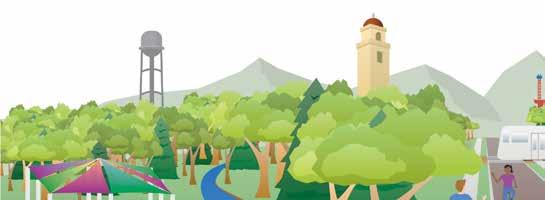
ON THE MOVE


COMMIT: City Departments Working Together for
Safer, Cleaner Neighborhoods
Cherie Wood, Mayor
801-464-6757
mayor@sslc.gov
City Offices
Monday - Friday • 8 am to 5 pm
801-483-6000
220 E Morris Ave, SSL, UT 84115
Public Meetings
For more info: www.sslc.gov
PLANNING COMMISSION
Thursdays, Oct 2 & 16, 7 pm
CITY COUNCIL
Wednesdays, Oct 15 & 29, 7 pm
CIVILIAN REVIEW BOARD
Monday, Oct 6, 6:30 pm
COMMUNITY CONNECT
Wednesday, Oct 15, 10 am
Fall Leaf Bag Program
Starting October 1, residents can get free leaf bags as part of your SSL Waste Collection services. Residents can pick up five free leaf bags from the Public Works Office at SSL City Hall (220 E. Morris Ave, 4th Floor). You must show a valid ID with a South Salt Lake address in order to claim your bags. Help us keep leaves out of our storm drains and waterways by raking and bagging your leaves this fall. If you have questions, please call 801-483-6045. Youth Boxing Program
Message from Mayor Cherie Wood
Creating safe, clean, and welcoming neighborhoods is one of my highest priorities in South Salt Lake. Every resident deserves to live in a community that feels safe and cared for, and every property owner should feel supported in maintaining and improving their property.
To achieve this, we’ve developed an innovative, collaborative approach called COMMIT—our Community Impact Team. This effort brings together experts from multiple City departments, including Community Development, Building, Code Enforcement, Police, Fire, Stormwater, and the Salt Lake County Health Department. Together, they work to address complex property issues that affect not just one address, but the safety and wellbeing of entire neighborhoods.
Some of the challenges we see include properties in disrepair, vacant or abandoned buildings that have become eyesores, breaches of vacant structures, or businesses operating without proper licenses. Through COMMIT, we are able to combine resources, take a comprehensive approach, and most importantly, work directly with property owners and tenants to find lasting solutions.
This year alone, our COMMIT team has addressed 75 property issues, including 4 abatements, 9 encampments, 4 building breaches, and 3 board-ups. We identified and responded to more than 47 vacant buildings, many of which were converted into licensed businesses or rentals, contributing to safer, more vibrant neighborhoods.
What makes COMMIT unique is our “front porch” approach. Our team meets with property owners and residents, explains the issues, and provides guidance and resources to help them bring their property into compliance. We respect the delicate balance between property rights and neighborhood safety, following an
“Ask, Tell, Make” philosophy: first asking for voluntary compliance, then explaining requirements clearly with outlined consequences, and finally taking necessary enforcement action only when all else fails.
One example highlights the importance of this work: A property in South Salt Lake was occupied by an individual unable to care for himself. The home fell into disrepair and attracted drug activity, putting both the resident and the neighborhood at risk. Our COMMIT team worked to relocate the individual to a safer environment, abated the property, and restored it to community standards. This outcome not only improved safety but also demonstrated compassion and collaboration.
The COMMIT program shows what’s possible when City departments and residents work together. It’s about more than fixing properties—it’s about strengthening neighborhoods, protecting residents, and ensuring South Salt Lake continues to be a place we’re proud to call home.
The COMMIT Team has addressed 75 property issues, building stronger, safer neighborhoods for all residents.


South Salt Lake Recreation

Youth Basketball Grades
Pre-K. - 6th Registration closes
October 20 Visit sslc.gov or scan the QR code to register



Corey Thomas, Council Member, District 2
This year is an election year for several City Council seats and the Mayor, and I want to share some important information regarding the upcoming election. Mail-in ballots will be sent to registered voters in mid-October. It is free to mail your completed ballot, but please remember to sign it before mailing.
You can also drop off your ballot prior to Election Day at the Salt Lake County Office (2001 South State Street, Salt Lake City), where in-person voting is also available. On Election Day, several polling places will be open; voting closes at 8 PM. If you are in line before 8 PM, you will still be able to cast your vote. Visit the Salt Lake County Clerk website to find Election Day mail-in ballot drop off locations, and to register to vote online. In-person registration is also available at the Salt Lake County building or at any polling location on Election Day. Please remember to bring the correct identification documents with you if you plan to register in person.
Step Into the Ring
At Central Park
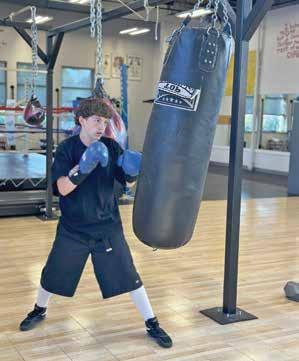
The Promise SSL-PAL Boxing Program is gearing up to get youth competitionready this year at Central Park Community Center. This is a free afterschool program for youth 6th-12th grade looking to start a new sport, or advance their skills in a safe, structured environment. Boxers will learn boxing fundamentals, sparring skills, and strong training techniques, whether or not they choose to pursue competitions.
Outside of the gym, we work to ensure that the whole athlete is supported by offering a daily academic hour for homework help, free dinner, and college and career readiness workshops to explore life after high school. The program focuses on the values of teamwork and support by ensuring that all in the program are working together, no matter their skill level or goals in the gym.
To learn more and to sign up for the program, contact our Center Coordinator, Sarah Gregory, at 801-386-4949 or sgregory@sslc.gov.
Curbside Cleanup Program
The South Salt Lake Curbside Cleanup Program is available to all city residents who receive city garbage service (this does not include apartments and multiplex units that contract their own garbage service). Curbside pick up will take place November 3-12 for approved items that are boxed, bundled or bagged. Items may be placed in the park strip up to one week before your scheduled pick up day, and must not obstruct sidewalks, gutters, storm drains, or roadways. View your exact pick up date and all program guidelines at sslc.gov.

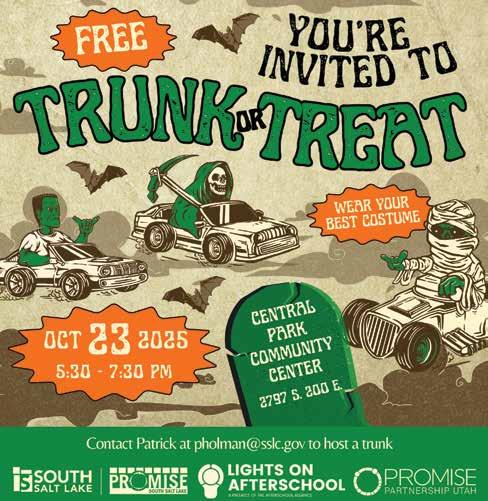

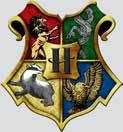

FRIDAY FRIDAY











Public Safety
October is Domestic Violence Awareness Month
At the South Salt Lake Police Department, we’re committed to serving and protecting every member of our community. That commitment goes beyond responding to calls; it’s about providing steadfast support to those who have been impacted by crime. Recognizing the immense courage it takes to come forward, we’ve built a dedicated program to walk alongside victims every step of the way.

Our Victim Advocates work hard to educate survivors about resources available to them, such as crime victim reparations, counseling resources, emergency shelters, phones, and so much more. By offering guidance through the legal system and connecting them with community resources, advocates help survivors regain a sense of control and stability during incredibly difficult times.
October is Domestic Violence Awareness Month. We encourage all members of our community to recognize the signs of domestic intimate partner or dating violence, and to have the courage to speak up or report it. Visit sslc.gov to learn more about the signs of domestic violence, and find resources that can help.
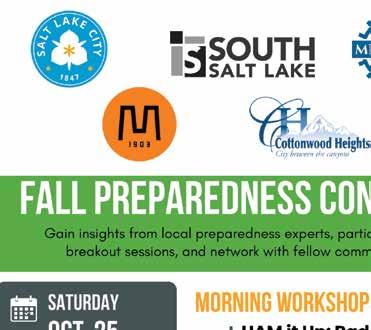
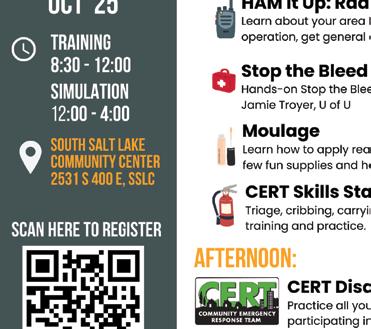




The Community Emergency Response Team (CERT) is volunteer program that educates community members in emergency response techniques specific to potential disasters in our area. To become a member of CERT, you must complete an at-your-own-pace online training, attend four in-person trainings, and participate in a large-scale disaster simulation. Our next series of in-person CERT trainings will begin on October 2. Scan the QR code above, or visit sslc.gov to sign up and find more information.
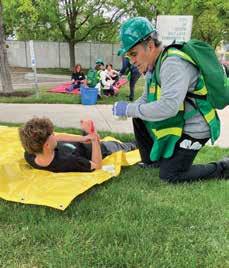
2025 GENERAL ELECTION VOTER GUIDE
SOUTH SALT LAKE VOTING INFORMATION SALT LAKE COUNTY VOTING INFORMATION
In South Salt Lake, eight candidates are campaigning for a seat on the city council. You’ll learn more about each of them as you continue to flip through this Voters’ Guide.
• Brittany Karzen & Cherie Wood are running for Mayor.
• Aileen Hampton & Sharla Bynum are running for the District 3 council seat.
• G. Ray deWolfe & Conrad Campos are in competition for one of the At-Large seats.
• Corey Thomas is running unopposed for District 2.
• Clarissa Williams is running unopposed for an At-Large position.
In South Salt Lake, voters are encouraged to review the process for Ranked Choice Voting (RCV) as ballots may appear slightly different from previous election cycles and neighboring municipalities not utilizing RCV.
Instead of a single-choice, winner-takes-all voting system, Ranked Choice Voting allows for a different methodology to be used when tabulating votes. Each voter’s first preference for candidate is recorded initially. If a single candidate receives over 50% of the vote, they are announced as the winner.
If no candidate reaches 51 percent, a clear majority, then the candidate with the least votes is eliminated. Those who voted for the eliminated candidate would then see their votes assigned to their second choice. After those votes are redistributed based on second preference, the candidate with over 50% of the vote wins. If there is not a clear majority again, phasing continues until there is. An example is detailed below.
For voters, Salt Lake County recommends not ranking a candidate more than once. In other words, listing one candidate for first, second, and third choice will not benefit the candidate in any way.
How ranked choice voting would work:
• Voter ranks candidates A, B and C for first, second and third place. Jane Doe ranks her votes in this order – C, A, B.
• If no candidate reaches 51 percent then whoever is in third place would be eliminated. For example: candidate A is 40 percent, B is 35 and C is 25, then candidate C would be eliminated.
• Since Jane Doe’s candidate C was eliminated, her vote would then go to A, her second choice.
• This process would occur until a candidate reaches a majority.

Hey Voters! Please review the following voting information directly from Salt Lake County before submitting your ballot.
Nov. 4 is the General Election - Vote Centers and drop boxes will close promptly at 8:00 p.m.
Important Dates
Oct. 10 - Salt Lake County will host Logic & Accuracy Tests where the public is invited to attend live demonstrations of voting equipment.
Oct. 14 - Ballots being to be mailed (21 days before the election as per Utah’s legislation).
Nov. 18 - Board of Canvassers Meeting where each city will certify results after presented to the City Recorders.
Vote Box locations:
Residents can vote by mail or in-person at various drop box locations throughout Salt Lake County:
County - Salt Lake County Government Center (2001 State St.)
Cottonwood Heights - City Hall (2277 Bengal Blvd.)
Draper - City Hall (1020 Pioneer Rd.)
Holladay - City Hall (4280 S. 2300 E.)
Herriman - City Hall (5355 Main St.)
Midvale - City Hall (7505 Holden St.)
Millcreek - Common (1354 E. Chambers Ave.)
Murray - Post Office (5025 State St.)
Sandy - City Hall (1000 Centennial Pkwy.)
Sandy - Senior Center (9310 S 1300 E)
South Jordan - City Hall (1600 W Towne Center Dr.)
South Salt Lake - Granite Library (331 S. 500 E.)
Riverton - City Hall (12830 S Redwood Rd.)
Taylorsville - City Hall (2600 W Taylorsville Blvd.)
Wet Jordan - City Hall (8000 S Redwood Rd.)
West Jordan - Ron Wood Park (6000 W New Bingham Hwy.)
West Valley - City Hall (3600 S Constitution Blvd.)
Register to Vote:

Residents can register to vote online up to 11 calendar days before the election (before 5pm). Registration must be submitted and received before Tuesday, Oct. 28 to receive a ballot in the mail. A valid form of ID, accurate address information, and date of birth is required to register. Residents can register either: online by visiting the State of Utah’s website (see adjacent QR code); through mail by filling out the Formulario de Inscripcion por Correspondencia Para Votantes (Voter Mail-In Registration Form) found on the County’s website; or in-person at the 2001 S. State St. office. Same-Day registration options will also be available at vote centers. Learn more about voting information through Salt Lake County’s website at: saltlakecounty.gov/clerk/elections. Or by directly emailing: vote@saltlakecounty.gov.
SOUTH SALT LAKE MAYOR
Sourced directly from our readers
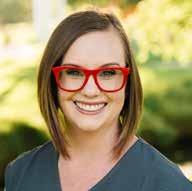
BRITTANY KARZEN
BrittanyforMayor.com

QUESTIONS CHERIE WOOD
What is your stance on local government cooperation with ICE?
What is SSL doing to protect immigrants and people of color?
Local government is not, and should not be, responsible for enforcing federal immigration law…when residents fear that contact with local government could expose them to immigration enforcement, they are less likely to call for help, report crimes or engage with city services. That makes all of us less safe.
South Salt Lake is one of Utah’s most diverse cities and has long been a welcoming home for immigrants and refugees….Local government should focus on protecting rights, building trust and ensuring every resident feels safe, never on acting as an extension of ICE.
I’m not part of the current city administration, but as a candidate for mayor, I believe South Salt Lake should always be a safe and welcoming place for every resident. Our diversity is one of the things that makes this city special. I would focus on making city services accessible to all, building partnerships with community organizations, and ensuring that everyone, no matter their background, feels respected and included. This only matters, though, if we are able to build effective and durable relationships that give South Salt Lake a regional advantage—so our community is not just welcoming, but also well-positioned to thrive.
The city of South Salt Lake Police Department does not cooperate with ICE. It is not appropriate for our local resources to be reprioritized by the federal government for their needs.
Do you believe current property tax revenue is being used effectively? How so?
If elected, how will you begin managing high-density housing, short-term rentals, and property value protections in your community? Do you support holding builders accountable to a higher standard?
I believe the intent of government should be to use property tax revenue wisely; focusing on…public safety, drivable roads and well-maintained parks. But when information about how those dollars are spent isn’t shared …taxpayers lose confidence….
That’s why I support tools like a public-facing budget dashboard and regular reporting that breaks down spending in plain language…. Property taxes are a significant investment for families…especially here in South Salt Lake, where residents already pay some of the highest property taxes in the state. My commitment is to make sure every dollar is tied to visible outcomes that matter most to South Salt Lake residents.
Managing growth in South Salt Lake requires balance. We must protect our single-family neighborhoods while also building both for-sale and rental housing that meets the needs of a diverse community. Growth is inevitable, but it must be managed responsibly and in a way that strengthens our city.
Developers should be held to a higher standard. When new projects come in, they must include the improvements needed to support them, such as streets, sidewalks and infrastructure. We cannot ask South Salt Lake taxpayers to subsidize those costs, especially when high-density developments displace businesses that bring in sales tax and other critical revenue to the city.
Growth must also be environmentally responsible—providing green space and walkable communities, mitigating traffic impacts and protecting the health of residents.
As mayor, I will ensure housing development is thoughtful, accountable and built to strengthen South Salt Lake for the long term.
…Our community liaisons help our residents with language barriers and navigating unfamiliar systems. We have almost completed a Pathways to Citizenship program with philanthropic support to navigate the application and legal roadblocks. We have community pantries…and a citywide system of after-school programs to help our youth be successful…
Following the wave of national protests, I led the transformation of our police department by establishing a Civilian Review Board— bringing greater accountability and transparency to public safety. By prioritizing community policing and listening to the voices of our residents, I helped shift the department toward a model rooted in trust, fairness and social justice.
South Salt Lake’s current property tax revenue is being used effectively. There has been a struggle over the last 20 years to rebalance and prioritize the city’s needs after the state changed the way it distributes sales taxes each community generates. South Salt Lake was one of only a handful of cities that were significantly harmed statewide. This action removed over $6 million annually from the city of South Salt Lake and redistributed it to other communities in the state. The two primary sources of the city’s budget are property taxes and sales taxes.
...We have been very strategic in zoning the downtown to support the high-density housing the state is requiring. Our downtown area is rich in established transit options, with the S-Line, TRAX line, Parley’s Trail, and is surrounded by I-15 and I-80.
Earlier this year, we passed a Short-Term Rental Ordinance….The ordinance establishes caps and zoning rules to keep short-term rentals from overwhelming residential areas. It provides strict requirements around residency and licensing….Overall, the city’s strategic planning and community partnerships help support homeowners and maintain property values.
Five years ago, we utilized a Public Improvement District to ensure the developers building in the downtown would pay for the needed sewer infrastructure improvements to address additional capacity issues. I am committed to using these types of tools so that the cost of development is addressed by those who develop.
QUESTIONS
Sourced directly from our readers
SOUTH SALT LAKE DISTRICT 3
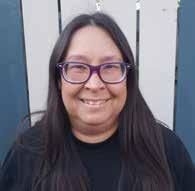
What is your stance on local government cooperation with ICE?
Do you believe current property tax revenue is being used effectively? How so?
Thinking about fiscal responsibility, what values should your local budget reflect? How do you plan to balance those values?
Many residents reported concern for government oversight and transparency. What systems would you support to hold local officials accountable when transparency standards aren’t met?
AILEEN HAMPTON
AJ4Riverton.com
I have been very concerned about this issue since a personal acquaintance, a previous but recent resident of South Salt Lake, was arrested when he turned up for his regular refugee hearing and then was summarily deported. I feel local government should be cooperative with ICE when ICE provides clear evidence as to why specific persons are of interest to them for unlawful activity. Otherwise, our residents need the benefit of our belief that they are law-abiding, no matter where they came from. Salt Lake City, and South Salt Lake in particular, have not only a history of effectively integrating immigrants, but an international reputation for welcoming refugees. It is important to me that those residing here now feel safe in the support of their neighbors and local government, so that they can focus on building better lives and continuing to contribute to their new community.
No, I feel there is great room for improvement to efficiently use our tax dollars. Since I ran for city council in 2021, property taxes have been raised twice. The first time, property tax was doubled. I could have more faith that a tax increase was necessary if it hadn’t been preceded by the city council voting to increase local elected officials’ pay by 40 to 50%. Now, city councilor pay is about 70% higher than it was four years ago. This has raised grave concerns in me about the priorities that have been used for the allocation of our citizens’ tax contribution.
The first, most important thing is that the regular services obligatory to municipal government are provided to citizens with a service-first attitude. Although municipal employees are valuable, making an indispensable contribution to the lives of the residents of the city and should be fairly compensated for their positions, it is still important to remember that they are public servants in a small city with limited revenue. Also, promotion of the arts and activities that promote community involvement and connection are vital to the well-being of residents. Another essential element is for the budget to be written in such a way that a layperson can follow what expenditures are there and what they mean. Those in government service must always remember that they are accountable to the public, both in current spending and in planning for the future. Above all, everything must balance. Of course, this is a huge challenge, but new perspectives will help.
This is a very important question and one I wish to discuss with constituents. How do we best hold our elected officials accountable? The main way we have right now is our election system, when we can choose someone that we think would do better. And that is why I am running, so voters in my district have a choice. I hope they choose new eyes to represent them in looking at the situation in South Salt Lake.

SHARLA BYNUM
SharlaBynum4SSL.com
City Journals Note: As of our press date, Sharla Bynum had not responded to our editorial staff’s inquiries at press time. The following information can be found on her website:
“Experience matters. I take pride in being fair, collaborative and committed to working with all stakeholders, as demonstrated by my six years of service as council chair. Effective leadership requires the courage to have difficult conversations and the humility to listen to experts. It would be an honor to continue representing and serving the South Salt Lake community”
“It is critical that we continue building on the community policing model in South Salt Lake. When the council created our Civilian Review Board, we made it clear that our priority is strengthening trust and accountability while protecting and serving our community. Current programs, such as our Homeless Resource Officers and School Resource Officers, demonstrate how this approach is working and provide a strong foundation to expand upon.”
“Housing options for all ages and income levels are a growing concern across Salt Lake County, and South Salt Lake is no exception. Our community should be a place where people can rent, buy and comfortably age in place. I am committed to advancing affordable housing alongside new development, while also working with community partners to rehabilitate vacant homes and create homeownership opportunities for first-time buyers.”
For more candidate responses check out our website at valleyjournals.com
QUESTIONS
Sourced directly from our readers
SOUTH SALT LAKE AT-LARGE SEAT

What is your stance on local government cooperation with ICE?
What is SSL doing to protect immigrants and people of color?
Do you believe current property tax revenue is being used effectively? How so?
If elected, how will you begin managing high-density housing, short-term rentals, and property value protections in your community? Do you support holding builders accountable?
Thinking about fiscal responsibility—what values should your local budget reflect? How do you plan to balance those values?
G. RAY DEWOLFE
ray.dewolfe@gmail.com
We have been clear with our police – we do not want to enthusiastically support or provide assistance to ICE. We will do what’s required by law. We will not volunteer to raise our hands to cooperate with ICE unless mandated to do so. And if that’s the case, I would encourage our city and police force to comply to the least amount as possible.
We leverage our Promise South Salt Lake education department to provide information and resources to families and people of color. We have a focus on community policing and work to build trust and respect with our neighbors. We get to know our neighbors. We have a family liaison team on staff available to support families who need services and have recently partnered with the American Immigration Lawyers Association of Utah to host an event educating people interested in obtaining U.S. citizenship. We are open to any additional ideas and ways to continue to support our resident of all backgrounds.
Yes I’d like to think so. We take resident feedback very seriously before we pass a budget. The City Council and the City Department leadership have a transparent process during the budget season. Before we pass a budget, we have in-depth presentations and discussions with department leadership to discuss their needs, their anticipated asks, and time to engage in discussion. Additionally, we have a survey launched to residents in the weeks ahead asking about their priorities, needs, and wants regarding the budget.
Every city must do their part in the housing shortage. No city can solve it on their own. I think South Salt Lake has done its part. We hold deveopers accoutnable by having tight development agreements and approproaite impact fees, so our exisitng residents benefit from new development and South Salt Lake isn’t left footing the bill for increased demands to our infrastructure.
The city and residents value public safety, community engagement, qualified staff, economic development, smart growth, quality infrastructure and educational programming (Promise). Something I think is important is to plan proactively for costs instead of reacting to costs. It’s never popular to increase fees or raise taxes; however, delaying too long until something becomes a big problem can force taxes to raise way too high. I think we can balance those values by being mindful of our spending, saving up for emergencies, and being good stewards of our tax dollars.

ccampos061@gmail.com
City Journals Note - As of our press date, Conrad Campos had not responded to our editorial staff’s inquiries. The following information can be found online:
“I have decided to run, again, for the City of South Salt Lake City Council, At Large seat,”. (Posted on the Stand up for South Salt Lake FaceBook page on Aug. 30).
What is one main succinct reason/goal for why you are running for this election?
I enjoy it. I try to focus on balancing the needs of different groups who occasionally have competing priorities. I look and advocate for win/wins.
South Salt Lake’s new traffic calming program aims to improve safety
South Salt Lake City officials have unveiled a new traffic calming program to address safety concerns, including speeding and pedestrian safety, and to implement solutions like speed pillows and intersection improvements.
By Linda Petersen l.petersen@mycityjournals.com
City officials are hoping a new traffic calming program developed by the city’s traffic safety committee will help make community streets and neighborhoods safer. On Aug. 27, Jacob Moser, a city engineer, presented the new program to the South Salt Lake City Council.
The program addresses several concerns, including speeding, cut-through traffic, cyclist and pedestrian safety and parking issues. It also creates a process for handling neighborhood complaints and prioritizes where the city should spend money on improvements.
The program will use a set of criteria to determine the priority of each area. This includes taking into account the average speed and volume of cars on a road, the presence of sidewalks, crash history and


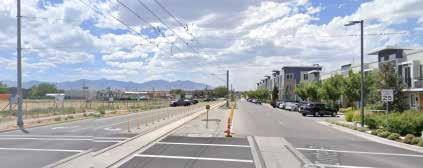
how close a problem area is to youth facilities like schools or community centers.
“This was an attempt...to have a process that when we get complaints on parking or speeding in neighborhoods and where do we focus on spending dollars to make improvements and what is the necessary improvement?” Moser said. “The engineering department’s been working on this and finally got it in a form where it can be put on the website so if somebody complains... we can have them go here and fill out this form...to start adding these improvements or protections in their neighborhood.”
As part of his presentation, Moser highlighted several potential solutions and
already-completed projects. He said the city has used speed pillows or cushions [a series of raised areas with cutouts designed to slow down traffic] which will be permanent concrete installations, to slow traffic. Other options include traffic circles, additional bulb outs [curb extensions that protrude into the roadway to shorten pedestrian crossings and slow turning vehicles], parking restrictions at intersections, new bike lanes and sidewalk improvements.
City crews have already installed traffic safety measures in two problem areas:
At Olene Walker Elementary 3751 S. 900 West, bulb outs and crosswalks with speed signs were added to improve what
Moser called “a long midblock crossing.” The school is also working to add more crossing guards. Also, following a fatal accident last year at Truman and Main Street, the city added red curbs and “no parking” signs to improve visibility at the intersection.
The city was recently notified that it has qualified for a federal “Safe Streets for All” grant to help implement some of the proposed solutions but has not yet received the funding, Moser said. Once that money becomes available the city has plans for several areas including Greg Avenue where a project is planned to add a new sidewalk with ADA ramps to an area where the sidewalk currently ends.
At Woodrow Wilson Elementary, 2500 S. State St., the city is working with UDOT to install a pedestrian hybrid beacon—a “hawk signal”—to make it safer for school children to cross State Street.
After numerous complaints about speeding, the city performed a speed study on 3745 South and will add speed pillows to the streets.
The city council responded positively to Moser’s presentation.
“It is so helpful to have this criteria that we can actually have a conversation because everyone thinks their streets are the worst, right?” Council Chair Sharla Bynum said. l







The South Salt Lake City Council were recently updated on traffic safety measures being implemented by the city. (Courtesy South Salt Lake City)
Water
main break affects
South Salt Lake businesses and homes
A water main break in South Salt Lake impacted about 60 homes and businesses causing a temporary loss of water service and highlighting the city’s ongoing efforts to address its aging infrastructure.
By Linda Petersen l.petersen@mycityjournals.com
Awatermain break in South Salt Lake on Sept. 9 affected approximately 60 homes and businesses. City officials say it was an unfortunate but not uncommon event for a city with aging infrastructure.
“South Salt Lake is one of the older cities in the state, and like other older cities has an aging infrastructure,” City spokesman Joseph Dane said. “The city council has been supportive over the last several years and has voted to include funds in the annual budget for ongoing infrastructure upgrades. Public Works will be upgrading approximately 2,300 feet of water main line this fiscal year, which is about the average we budget for each year.”
The break occurred at Main Street between Oakland and Stratford avenues and was discovered around 1 p.m. Water to the area was immediately shut off, and city crews


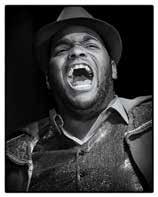

were able to fix the break and restore service by 11 p.m. An estimated 175,000 gallons of water were lost during the incident.
The break damaged a small section of Main Street in front of Bonwood Bowl at 2500 S. Main St., and the area was re-asphalted the following week.
Due to the size of the break, South Salt Lake Water utility customers throughout the city were cautioned that they might experience sediment in their taps. A notice on the city’s website advised that the sediment was not harmful but “it is not pleasant to see.”
“Sediment from ground water and corrosion settles at the bottom of water pipes,” Dane said. “When the pressure changes, such as during main breaks, it temporarily stirs up the sediment. The only way to fix this is to replace all old water pipes throughout the city, which takes place through ongoing, annual infrastructure upgrades.”
Those who experienced the problem were advised to flush their water for about 20 minutes. If that did not resolve the issue, they were told to call Public Works.
“Main breaks happen all the time,” Dane said. “We have an old water system and keep chipping away at updates. By the time we’re getting close to completion, we’ll get to start all over again with the newest and greatest technology.” l
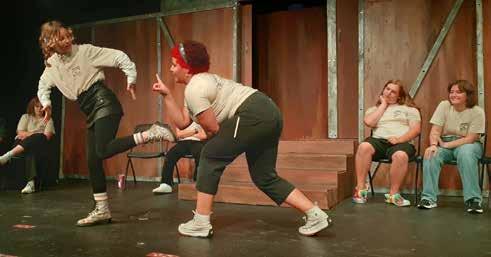
Cottonwood High theatre season puts a twist on classic tales
Through reimaging classics, theatre students are exploring what it means to bring a story to life.
By Julie Slama j.slama@mycityjournals.com
Cottonwood
High’s theatre season will feature well-known stories with creative twists, allowing students to explore their talents in fresh ways.

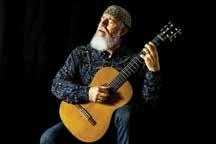
as a busker on the streets. We’re telling the beautiful story, but we’re telling it a little bit differently. It’s still light, families and kids will love it, but it’s told in a way that’s more relatable to kids of all ages.”
The same messages of friendship, acceptance and believing in oneself will have a deeper meaning, he said, as students and patrons learn about the characters seen in this interpretation navigating the “jungle” of bustling city streets.










“It’s a year of story books, but with a unique twist on them, which will be so cool,” said Cottonwood High theatre teacher and director Adam Wilkins. “All year it’s stories, but told in different, innovative and fun ways.”
The season kicks off with the 16-member improv team performing at 7 p.m., Oct. 23 at the school, 5715 S. 1300 East. Tickets are $5, with monthly shows to follow.


On Oct. 27, from 6-8 p.m., the school will host a free Haunted Hallway event, with adjustable spookiness levels, offered alongside an indoor trunk-or-treat organized by Latinos In Action.
“Haunted Hallway started off as a small little party we did for my theater students, and then it just morphed into something we did for our performing arts department, and then it changed into the combined activity with LIA (Latinos In Action)—and it’s so fun. It grows bigger and better every year,” he said.
The fall musical, “Seussical,” runs 7 p.m., Nov. 19-22. Tickets are $10 at cwoodtheatre.com.
“I love the stories of Dr. Seuss. We all do,” Wilkins said. “I love all the great characters, but I’ve never been a huge fan of the traditional way the show’s played. The message is good, and the music is killer, but it comes across juvenile with cartoony characters. So, we’re going to rip the cartoon out of it and portray these characters not as animals, but rather real people telling these stories. We won’t have a guy in big Dumbo ears, but instead we’ll have Horton in a gray hoodie
In the spring, students will stage “The Little Prince,” which also will be their regional competition piece. The show will run March 25-28, 2026. Tickets are $10.
“We’re doing ‘The Little Prince,’ but we’re telling it in a creative way. We’re doing it with puppets; most of our actors are puppeteers,” he said, adding the students will make the puppets themselves. “I was dedicated to make the season where everything feels, connects and is told in new ways. I was researching stories when I learned ‘The Little Prince’ is the most translated novel so I read it. When I did, I knew I had to include the show with puppetry. It gives my students this skill of how I can portray this or how can I show this with puppets.”
The final production, “Alice By Heart,” runs 7 p.m., May 13-16, 2026, with $10 tickets.
Wilkins, a fan of musician Duncan Sheik who composed the music for the show, saw West Valley Arts’ performance recently.
“I want to absorb anything new he’s got so when I saw it, then read the script, I knew we would do the show,” he said. “It fits perfectly with the storybook season. It has iconic characters of ‘Alice in Wonderland,’ but it has the gift of seeing something in a different way and that’s beautiful.”
About 50 students also will attend Utah Theatre Association’s DramaCon in Cedar City, participating in workshops and seeing performances. Wilkins, who attended DramaCon as a student, now serves on the UTA board. l
Members of Cottonwood High’s Improv students practice prior to the Oct. 23 show. (Adam Wilkins/ Cottonwood Heights)
City considers new zoning for proposed senior housing
South Salt Lake City Council is considering a zoning change to accommodate Platform 3900, a proposed 150-unit affordable senior housing complex, which developers say will address a community need for senior housing.
By Linda Petersen l.petersen@mycityjournals.com
South Salt Lake City leaders are considering a new zoning request for a proposed affordable senior housing project called Platform 3900. The project is a collaboration between Thomas Lee of the Lee Group and Marion Willey of the Western Region Nonprofit Housing Corporation. The developers gave the council a first look at the proposal Aug. 13, asking for some zoning concessions to make the project possible.
“We’re super excited about this project,” Lee told the council. “This is essentially a passion project for us because it’s not a market rate project. This is an affordable project, and it’s a senior project. So when we get to do projects like this, we think about our parents and why we’re doing it and what they need in their community and their lives and stuff like that to improve their lives.”
The project would feature 150 one- and

proposed 0.5 parking spaces per unit, do not meet current city requirements. Lee noted that many seniors have only one vehicle or no vehicle at all, and the project’s proximity to the Meadowbrook TRAX station makes a lower parking ratio workable.
“Currently, our code for multi-family dwelling developments we require a certain number of amenities according to the number of units provided and we think it will be best if we come up with a different category to best accommodate this project,” City Planner Jess Shum said.
Initial council response seemed positive. Councilmember Clarissa Williams expressed her support.



two-bedroom rental apartments across two buildings. Tenants would pay 60-80% of the area median income, and the developers intend to retain and manage the property longterm.
“Our goal is to hold this long enough that our kids and the next generation can grow up learning property management, learning how to do this, and hopefully we shepherd them along the way, do it right, and they get to take




over,” Lee said.
Beyond housing, the project aims to foster social interaction with six dedicated community rooms, green spaces and a dog park. Planned programming includes yoga and gardening. The developers also hope to attract a grocer to a 4,000-square-foot ground-floor retail space, offering discounted rent to a qualifying tenant.
To move forward, the project needs a zoning change because certain aspects, such as a
“I love this idea because we all would like to have our grandparents closer and having them in a community that can thrive rather than them being alone somewhere,” she said. “It’s a great concept.”
Councilmember Ray deWolfe praised the developers’ thoughtful approach.
“I like your project, and I like how it encompasses a holistic approach…to senior living,” he said. “I could see that you guys are really thoughtful about it, and I also like how you hold on to your investments and manage them.”
Shum and her staff will continue to work with the developers to determine the appropriate zoning and will bring the project back to the council for further consideration in the coming months. l











Platform 3900, a proposed senior housing project, would offer 150 affordable apartments to local older adults in South Salt Lake if approved. (Courtesy South Salt Lake)
The Power of Human Connection in Salt Lake County
is in a paradox. We are known as one of the most social states in the nation, yet our residents also report some of the highest feelings of loneliness. State health surveys show that nearly one in four Utah teens in 2023 and about 6% of adults in 2021 said they often or always felt, “People are around me but not with me.” That’s a sobering reminder that being surrounded by people is not the same as feeling connected to them.
The U.S. Surgeon General defines loneliness as the distress of not having adequate meaningful connections, while social isolation is the objective lack of social roles, relationships or interaction. Both are harmful. Loneliness raises the risk of premature death by 26%, and social isolation by 29%. Utah data show youth are particularly vulnerable, with loneliness peaking around 10th grade. At the other end of life, older adults may report less loneliness, but many live alone or are less socially active, leaving them isolated—and at increased health risk— even if they say they feel fine.
It’s not all bad news. Among adults, reported loneliness has risen from 5% in
Aimee Winder Newton Salt Lake County Councilmember| District 3

2019 to 16% in 2024. While that increase seems alarming, some experts believe it reflects growing awareness. More people are recognizing that connection matters, which may encourage them to seek help or create new relationships. Meanwhile, Utah’s highest years for suicides (2017) and overdose deaths (2022) are behind us, with rates trending slightly down. We should not ignore loneliness, but perhaps our awareness is a hopeful step toward stronger, healthier communities.
Addressing loneliness requires all of us. Parents can set the stage at home by turning off screens, setting aside phones, listening closely, and modeling the conversations they hope their children will have with others. Simple family meals
and one-on-one time give youth safe spaces to share what they’re really experiencing.
Schools and businesses also play a role. Policies that encourage real connection—team projects, buddy systems, carpools, phone-free zones or mentoring programs—help students and employees build relationships that strengthen both well-being and performance. Identifying at-risk youth early and linking them with mentors can make a world of difference.
Local governments can create environments where connection naturally happens. Parks, libraries, recreation centers and public transportation all serve as “third spaces” where neighbors can meet. Programs like Salt Lake County’s Free Youth Rec Passes, summer events, farmers markets and free-fare zones lower barriers and invite people to gather. These aren’t just amenities; they are investments in the health and strength of our community.
Faith groups, sports teams and even traditions around food and gathering offer additional pathways. Whether it’s cheering together in the stands, sharing

a meal or volunteering at church, these experiences weave the fabric of community life. With creativity, we can support system-level changes that expand these opportunities in healthy ways.
In the end, the responsibility rests with each of us. Teens can choose to include someone sitting alone. Adults can prioritize friendships, check in on a neighbor or carve out time for family. Older adults can accept invitations or invite others into their routines. Each of these choices is small, but collectively they build the kind of community Salt Lake County is known for—caring, connected and resilient.
So I encourage you to pause and ask yourself: Am I truly connecting or just surrounded? Whether you are a student, a parent, a business leader or a retiree, you have the power to strengthen the web of relationships that hold us all together. In Salt Lake County, our greatest strength doesn’t come from policies or programs alone—it comes from people. When we choose connection, we choose health, hope and a brighter future for our community.














Life and Laughter - Magic is a Superpower
Back in the day, it didn’t take much to be labeled a witch. Did you own a cat? Witch. Did you have a birthmark? Witch. Did you use herbs, wear a cape, know how to read or lure children into your gingerbread-flavored home so you could eat them for dinner? Witch.
I’m just saying, the bar was low. Starting in the 1450s, witch hysteria swept across Europe, lasting for centuries. Intense warfare, hardship, famine and disease meant only one thing: it was time to burn the witches, because obviously.
Nearly 60,000 people were tried and killed as witches. More than 80% were women and 60% were over the age of 40. It was a gendercide that wiped out generations of women. Many were healers, midwives, widows and property owners.
They’d reached a time in their lives where they were fine being alone, with maybe a cat or two. They just wanted a nice broom, a boiling cauldron of soup and a Pinterest board of “Witchy Reads.”
Many women step into their power once they hit 40, but give women power and there’s going to be trouble. Killing the older generations meant wisdom was lost forever, which is probably why we have mini golf sets for the toilet.
Like Labubu and Meta (and just as



diabolical), witch trials were big business. Women were arrested, property was seized and people flocked to churches because no one wants to accidentally sell their soul to Beelzebub.
The witch trials also created a disconnection between women; a fear of gathering, the angst of being seen as a “coven” when all you wanted to do was watch the “Real Housewives of Salem.” Women stopped socializing because having a friend for tea could end in a hanging. (And you thought your book club was stressful.)
I’m a lover of all things witchy, a devotee of strong women using their magic for good. A witch is a woman who speaks truth to power, without shame. Imagine a combination of Dolly Parton, Oprah Winfrey and Ruth Bader Ginsburg, a woman so powerful even the Puritans would have been like, “Nope, not today.”
You see, a witch hunt creates a cul-
ture that undervalues women. When you describe women as shrill, chatty, feisty, mousey, sassy, emotional, slutty, hysterical, irrational or hormonal, those words strip away power.
How many of these words are used to describe men? Almost zero. At the worst, men get labeled as “grumpy,” and somehow that becomes “distinguished.”
There’s still a witch hunt going on today. Saying “women’s rights” to certain groups triggers frothing at the mouth and a call for the ducking stool.
Women want to be believed, heard and have the ability to live without violence or discrimination. We want affordable physical and mental health care, an equal wage and respect. Is that insane, deranged, unhinged or any other word used to lock women up in asylums, as recently as 1967?
A witch stands on her own. She embraces her age, her knowledge and her intuition, without fear. It’s not surprising that interest in witchy practices is rising. You can learn spells on TikTok, craft a voodoo doll on YouTube and banish your ex to the depths of Detroit using a candle, cayenne pepper and a squeeze of lemon. Science, obviously.
For women who have felt disenfranchised in their communities, religions and

workplaces, witchy practices are a way to find their power. It isn’t an excuse to turn women into barbecue.
I associate magic with creation, and women are the ultimate creators. Women are magic, able to run empires, sing lullabies and look fabulous in a cape. Do you need someone to change the world for the better? Find a witch.


































